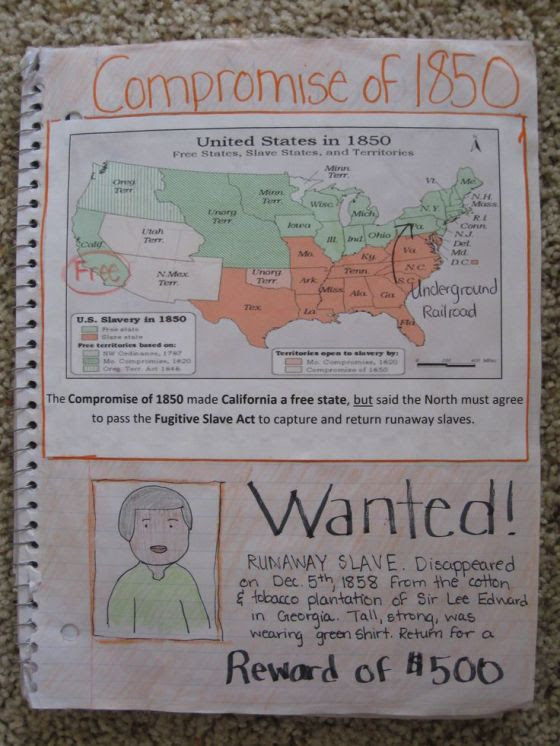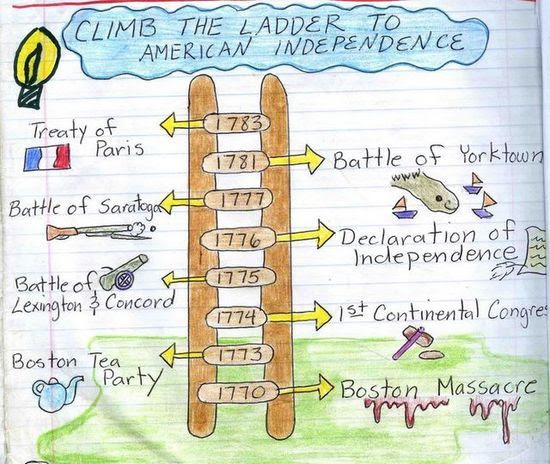Policymakers and reformers seeking changes in classroom practices seldom recognize or acknowledge the following points I will make in the next two posts.
The canard that teachers resist change and use the same old arsenal of techniques year in and out often comes from reformers and policymakers who press visions of classroom that they believe should happen in lessons (e.g., "personalized learning," new math and science standards, project based learning, and "discovery" lessons) and end up seeing adaptations and bastardized versions of innovations that disappoint both designers and champions (see here and here).
To the first point that historically teachers have altered their daily practices, first-hand accounts by teachers, histories of teaching over the past century, and journalist accounts record such changes (see here , here, and here). For the latter two points I offer one unnoticed example of a classroom technique that many teachers have voluntarily added to their repertoire of practices over the past four decades: the interactive student notebook (ISN)
Part 1 of this two-part post describes what the ISN is and one version originating in the early 1970s in a Northern California high school social studies department.
Part 2 reports on the slow but steady spread of ISN across other academic subjects and its advance into middle and elementary schools. Closer to quiet ripples from a dropped coin in a pool than highly touted innovations entering a district complete with strobe lights, a bass beat, and lots of testimonials from selected teachers and administrators, many teachers over time have quietly and without fuss integrated ISNs (including digital versions) into their daily mix of whole group, small group, and independent activities.
What are interactive student notebooks? Today, there are many versions of spiral-bound ISNs in use across the country. Over the past four decades, teachers in thousands of elementary and secondary classrooms and across academic subjects have put into practice the concept and use of the ISN. When I entered "interactive student notebook" in a Google search box, I got over five million hits (August 27, 2017).
No teacher that I know of, however, has taken out a patent on a specific design of this teaching tool. While there is great variation in how teachers use ISNs in their classrooms (see here, here, and here), there are common features to ISNs that I will illustrate below. The over-riding purpose of ISNs is to have students organize information and concepts coming from the teacher, text, and software and creatively record all of it within a spiral notebook in order to analyze and understand at a deeper level what the information means and its applications to life.
Early advocates of ISNs were enamored with research findings on learning styles, multiple intelligences, and neuroscience about right brain/left brain differences (logical and analytic vs. creative). But as cognitive psychologists and neuroscientists came to find in succeeding years it was not either/or but both/and (see here and here). Myths or not, these research findings resonated with many teachers looking for a practical way for their students to organize and thoughtfully process information from teacher lectures, textbooks, and other instructional materials.
In an ISN, students write on the right-hand page of a notebook with different colored pens and pencils information gotten from teacher lectures, textbooks, videos, readings, photos, and software. What is written could be the familiar notes taken from a teacher lecture or the requirements of doing a book report or the steps taken when scientists inquire into questions. These facts and concepts can be illustrated or simply jotted down.
The left-hand page is for the student to draw a picture, compose a song, make a cartoon, write a poem, or simply record emotions about the content they recorded on the right-hand page.
The ISN combines familiar information processing with opportunities for students to be creative in not only grasping facts and concepts but also by inventing and imagining other representations of the ideas. Both pages come into play (the following illustrations come from teachers and their students' ISNs that have been posted on the web.

A student studying pre-Civil War politics over slavery put this on the right-hand page.

A student taking science put this on the right-hand page.

And for the left-hand side, a student studying North American explorers did this one:

For science, one student made this for the left page.

And another student drawing and diagram for the road to colonial independence in America on the left-hand side looked like this:

Origins of ISNs
To the best of my knowledge, ISNs began with teachers experimenting about how best to help students understand content, grasp skills (especially critical thinking ones), and simultaneously be creative in learning both. In their classrooms, they relied upon teacher-centered instruction (e.g., lectures, discussions, homework, textbooks, and periodic tests).
While there may be other teachers who came up with the idea and developed it for their classes, one teacher in particular I do know embarked on such a journey and produced a interactive student notebook for his classes. Meet Lee Swenson.
A rural Minnesotan who graduated from Philips Exeter Academy and then Stanford University (with a major in history), Swenson went on to get his masters and teaching credential in a one-year program at Stanford. He applied and got his first (and only) social studies position in 1967 at Aragon High School in San Mateo (CA). Swenson retired from Aragon in 2005.
Beginning in the mid-1970s and extending through the 1980s, Swenson, an avid reader of both research and practice, tried out different ways of getting students to take notes on lectures and discussion, and write coherent, crisp essays for his World Study and U.S. history classes. He worked closely with his department chair Don Hill in coming up with ways that students could better organize and remember information that they got from lectures, textbooks, other readings, and films and portray that information in thoughtful, creative ways in their notebooks. They wanted to combine the verbal with the visual in ways that students would find helpful while encouraging students to be creative. Better student writing was part of their motivation in helping students organize and display what they have learned. Swenson and Hill took Bay Area Writing Project seminars. Swenson made presentations on helping students write through pre-writing exercises, using metaphors, and other techniques. It was a slow, zig-zag course in developing the ISN with many cul-de-sacs and stumbles.*
Both he and Don Hill began trying out in their history classes early renditions of what would eventually become ISNs by the late-1980s. In each version of ISN's Swenson learned from errors he made, student suggestions, and comments from Hill and other teachers in the social studies and English departments in the school. Swenson made presentations at Aragon to science, English, and other departments, schools in the district, and social studies conferences in California and elsewhere.
By the mid-1990s, Swenson had developed a simplified model ISN that he and a small group of teachers inside and outside the district were using. The model continued to be a work in progress as teachers tweaked and adapted the ISN to their settings. By the end of that decade, a teacher at Aragon that Swenson knew joined a group of teachers at the Teacher Curriculum Institute who were creating a new history textbook. Teachers Bert Bower and Jim Lobdell, founders of TCI, were heavily influenced by the work of Stanford University sociologist Elizabeth Cohen on small group collaboration and Harvard University's cognitive psychologist Howard Gardner's multiple intelligences. They wanted a new history text that would have powerful teaching strategies that called for student-teacher interactions. They hired that Aragon teacher who had worked with Swenson to join them; the teacher introduced them to the ISN that was in full bloom within Aragon's social studies department. They saw the technique fitting closely to the framework they wanted in their new history textbook. TCI contacted Swenson and he became a co-author with Bower and Lobdell for the first and second editions of History Alive (1994 and 1998).
By 2017, TCI had online and print social studies (and science) textbooks for elementary, middle, and high school classrooms. One of the many features of the social studies books was "[T]he Interactive Student Notebook [that] challenges students with writing and drawing activities." On their website, TCI asserts that their materials are in 5,000 school districts (there are 13,000-plus in the nation), 50, 000 schools (there are over 100,000 schools in the U.S.), 200,000 teachers (over 3.5 million in the country), and 4.5 million students (U.S. schools have over 50 million students).
From teacher Lee Swenson and colleagues' slow unfolding of the idea of an interactive student notebook in the 1970s in one high school, the idea and practice of ISNs has spread and has taken hold as a technique that tens of thousands of teachers across the country include in their repertoire. Classroom policymaking from the bottom up, not the top-down.
______________________________
*Lee Swenson and I have known each other since the mid-1980s. As a teacher at Aragon, he attended workshops sponsored by the Stanford/Schools Collaborative in those years. In 1990. Swenson and I began team-teaching a social studies curriculum and instruction course in Stanford University's Secondary Teacher Education Program. We taught that course together for a decade. Since then we have stayed in touch through lunches, dinners, long conversations on bike rides, and occasional glasses of wine. He has shared his experiences and written materials in how he and Don Hill developed ISNs for their courses.
|
30 de agosto de 2017
Teachers Designing Reforms That Stick: The Interactive Student Notebook (Part 1) by larrycuban
Postado por
jorge werthein
às
07:03
Assinar:
Postar comentários (Atom)

Nenhum comentário:
Postar um comentário